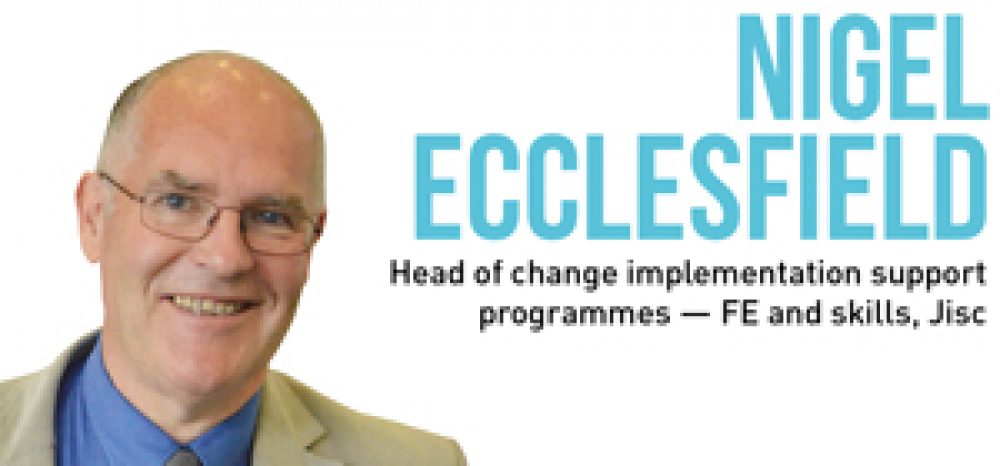Overarching FE and skills bodies have been looking at the Further Education Learning Technology Action Group (Feltag) report and come up with provider-level advice, explains Nigel Ecclesfield.
Feltag has been the subject of much discussion, not least at the National Institute of Adult Continuing Education (Niace) and Association of Colleges (AoC) conferences last month.
But, for all our individual thoughts, tweets, and conversations, the issues raised are bigger than any one organisation.
“Ownership by the FE sector of Feltag’s recommendations is key,” read the report recommendations — work together and collaborate was the message.
And that’s what we’re aiming to do. At Jisc, we have already convened a forum of what reads like a who’s who of FE bodies, to co-ordinate responses and join our planning.
That group includes AoC, NIACE, Association of Employment and Learning Providers (AELP), 157 Group, HOLEX, the Gazelle Group, The Association of National Specialist Colleges (Natspec), Institute of Education, Ofsted, Association for Learning Technology (ALT), Tinder Foundation, Workers’ Educational Association (WEA) and the Education and Training Foundation (ETF).
Also involved are the government’s Department for Business Innovation and Skills (BIS) and Skills Funding Agency (SFA).
These organisations cover all aspects of our sector — from the largest colleges to small independent providers — so they are the public voice of FE.
Working individually, these bodies represent their members and will continue to, but on this occasion they combined their knowledge and their experience in working on technology-related projects to provide a comprehensive overview of sector needs. They also identified solutions to respond to Feltag’s recommendations.
Staff, managers and students have told us they want more support for digital skills across a wide range of roles
In the first meeting in October this group identified six priorities for action on Feltag. Improving communication with funders was a clear priority, and we anticipate that this forum will help join the dots between what’s happening on the ground, and the sector’s strategic bodies.
But it’s not only collaboration between sector bodies that’s vital to meeting the recommendations. To achieve this shared vision individual providers also need to come together as one. We have outlined some key priorities where we think they could play a role.
Firstly, focus on the people. Feltag highlighted the need to share good practice and innovation through effective collaboration and networking, and to focus on people to make best use of technology.
To this end we have been consulting with thousands of individuals as part of our new co-design approach to innovation to understand what providers need. Staff, managers and students have told us they want more support for digital skills across a wide range of roles, and that’s what we’re doing; developing tools and guidance with our co-design partners, providers, learners and employers.
For example, for the ETF, Coralesce is developing a self-assessment tool to help diagnose skills gaps, with Jisc working to support the use of this new technology.
Staff-student partnerships are also a great way of boosting digital skills, so together we will be providing plenty of support for learner-led and learner-focused innovation and training.
Secondly, look for opportunities to support cross-provider communication.
The report argued that to overcome barriers to learner access, what’s needed is more effective sharing of content across providers. As an example, we know digital simulations can lead to improved learner outcomes; those who have success in using simulations for learning need to be able share their experiences to support others who may be interested in implementing these technologies.
To support access Feltag suggested the use of social media channels by providers. These should promote inclusion, offer advice and provide safe environments for their users, to create a platform for dissemination of best practice across various organisations.
Thirdly, seek opportunities for shared services. The joint provision of services for colleges and the skills sector are becoming increasingly recognised as a means of creating some of the efficiencies heralded by the Feltag report. A number of providers are already working together to share back-office management services, for example the FE Sussex consortium of colleges.
No organisation acts alone. If we all join in with our response to Feltag and to the new demands that teaching in the 21st Century is placing on us, we will be stronger and more influential together.









Your thoughts